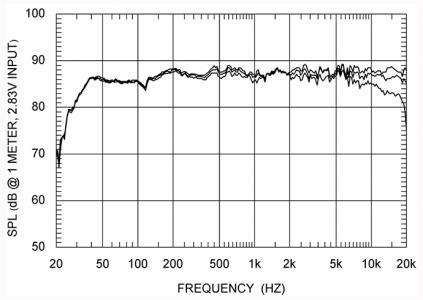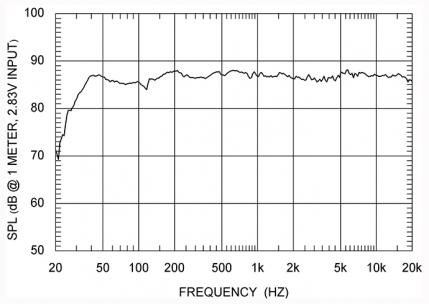Interesting that while you are saying we need to have a 'revolution' and demand better data/measurements from companies, your favorite conglomerate has the data and doesn't release it except in private dealer training. Why don't you start the revolution by asking your friends at Harman why that is so and ask them to release all of the measured data for their products?
There seems to be continued confusion here. I am not advocating a company but rather audio science. What Harman does as a company which involves more than research strategy, is not something I am here to advocate or explain. I am here to defend the audio research. Therefore I was quick, unprompted actually, to pile on Tim's message that even Harman itself doesn't release this data to the general public. Employees in companies often act as researchers and in publishing their trade secrets and in general, not acting on behalf of the corporation. Such is the case of Dr. Toole lamenting lack of measurement data such as provided on tires.
What I really want is for Harman to not only release their own spin data but the incredible library of spin data they have for other loudspeakers!!! And with it, large library of double blind test data with actual identity of loudspeakers. As I quoted in another thread, at the time of one published AES report a few years back, they had tested 70 loudspeakers with some 250 listeners involved (this is from memory).
They don't do this because they think it may come across negatively in the marketplace. You know, "they are bashing the competitors." As a consumer of course, I could care less about any manufacturer feeling bashed. If they don't like the measurements they can produce better products. And if they don't agree with blind listening tests results, they can run their own. But the reality is what it is. When the identity of the loudspeakers in their AES report for example came out, there were all these people who blamed it for lack of integrity and therefore commercial bias to have let that information get out. Shocking to me because we appreciate a heck of a lot more about the test once we know which graph and listening test results go with which loudspeaker. The people who scuff at this research, which by the way were objectivists on AVS, just looking for anything to put this work in bad light, interest of us as consumers be damned.
The disclosure may still happen but it takes a catalyst. And that would be changed mindset of buyers of loudspeakers to value such data. Again Tim was right that putting all of this technical data in marketing material at this point, is liable to create "too much data" and not help sales. Look at how much it has taken me to explain what it is to you all.
But yes, I have asked and there are some strong advocates of the same in the company. But so far, it has not happened. I do have the data though for a class of products and plan to write an article on them. They are for in-wall speakers though so it won't serve this group and also, less of a risk in the marketing department. Hopefully over time we can get access to more of this data.
Also, is that graph saying that when you are sitting in the "listening window" the JBL M2 measures basically ruler flat from 40Hz to 20kHz?
Yes. Note that this is not the same as what you hear because you also hear the reflections represented by the other curves. In other words, you hear a blended version of those graphs and it is that specific blend that has been found to be a good predictor of preferences in blind tests.










